Introduction
How Do Pigeons Mate: Pigeons, often regarded as the unassuming denizens of our urban landscapes, have a captivating and intricate mating ritual that is both fascinating and mystifying. Despite their ubiquitous presence in cities and towns around the world, the intricacies of pigeons carrier courtship and mating remain largely unknown to many. In this exploration, we will delve into the enigmatic world of pigeon romance and uncover the fascinating mechanisms that govern their mating behavior. Pigeons, scientifically known as Columba domestica, are a type of bird that belongs to the family Columbidae. These birds have been domesticated by humans for thousands of years and have a long history of cohabiting with us.
They are renowned for their homing abilities, having been used as messengers in various cultures throughout history. Yet, beyond their utilitarian roles, pigeons engage in a complex and intriguing dance of courtship and reproduction. At first glance, pigeon courtship might seem unremarkable, with pairs of pigeons often seen perched together on rooftops or city ledges. However, a closer look reveals a world of subtle signals, rituals, and behaviors that play a crucial role in the selection of mates and the establishment of pair bonds. These rituals are not only essential for reproduction but also offer a glimpse into the intricate web of nature’s design.
One of the most conspicuous aspects of pigeon courtship is their cooing, which is often associated with the classic image of two pigeons facing each other and softly cooing in harmony. This cooing serves as a form of communication between potential mates, with males trying to impress females with the depth and resonance of their coos. It’s a serenade of sorts, a melodious proclamation of affection that can be heard echoing through urban canyons and quiet countryside alike. But cooing is just the tip of the iceberg. Pigeon courtship involves a myriad of behaviors, including synchronized head bobbing, puffing up their plumage, and bowing to one another. These actions may seem trivial, but they are essential in establishing a bond between pigeons, leading to a long-lasting partnership.
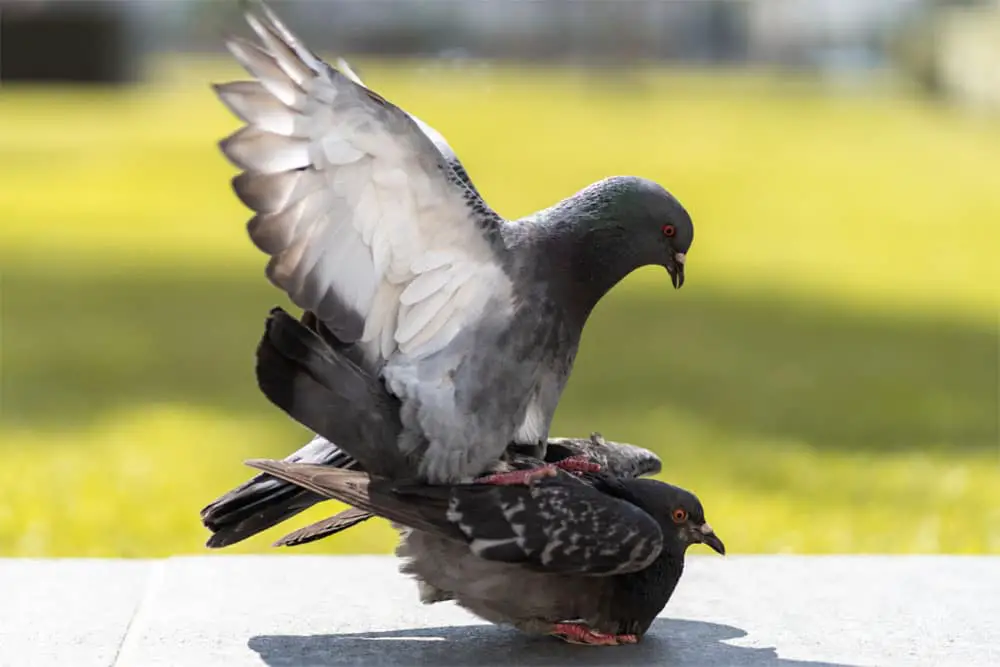
What are the signs of pigeons mating?
Things hotten up when the male offers his beak and indulges in a pigeon kiss (rubbing their beaks together). The hen will feed the male from her beak and together they will coo. After mating the first egg will be laid within 10 days, with a second arrival following a couple of days later.
Cooing and Vocalization: One of the most recognizable signs of pigeon mating is their cooing. Male pigeons often engage in rhythmic and melodious cooing, which serves as a form of communication to attract females. These coos can vary in intensity and duration, with males trying to outdo each other to capture the attention of nearby females.
Head Bobbing: Pigeons engage in synchronized head bobbing as part of their courtship ritual. Males and females will often face each other and nod their heads up and down simultaneously. This head bobbing is a mutual display of interest and affection.
Preening and Nest Building: As pigeons prepare to mate, they become more focused on their appearance and the construction of a suitable nesting site. You may observe pigeons preening their feathers meticulously and collecting materials like twigs, leaves, and small debris to build a nest. Nest building is a collaborative effort between the pair.
Can two female pigeons mate?
Two female birds will often marry each other, especially if no males are present. Each bird will lay infertile eggs and happily sit on them. Same sex male pairs are less common because male birds view each other as competitors first.
Social Bonding: Pigeons are highly social birds, and they often form strong bonds with other pigeons, regardless of gender. In some cases, two female pigeons may form a close and enduring bond with each other. This bond can be similar to the pair bond that forms between a male and female pigeon.
Courtship Behaviors: Same-sex pigeon pairs can exhibit courtship behaviors, such as mutual preening, cooing, and nesting activities. These behaviors are a way for pigeons to strengthen their social bonds and demonstrate affection for one another.
Nesting and Incubation: Even without a male in the picture, two female pigeons may build a nest together and take turns incubating imaginary eggs. This nurturing behavior is a reflection of their strong bond and desire to engage in caregiving activities.
Adoption: Pigeons, in general, are known for their willingness to adopt unrelated chicks. In cases where there are abandoned or orphaned pigeon chicks in the vicinity, a same-sex pair may take on the role of caring for and feeding these chicks as if they were their own.
Why do pigeons jump on each other’s back?
Well, all this changes if a sick female arrives in the garden. Males do a quick little dance, she’s too ill to bother to fly off, the male jumps on her back, mates, and then flies off. Other males watching follow suit, but not always, sometimes it’s just the one male that mates.
Mating Behavior: One of the primary reasons pigeons jump on each other’s backs is related to mating behavior. When a male pigeon is courting a female, he may jump on her back as part of the courtship ritual. This action signifies his interest in mating and can lead to copulation if the female is receptive. The male may also engage in gentle pecking and cooing during this process to further impress the female.
Establishing Dominance: Pigeon flocks often have a hierarchical social structure, with dominant and subordinate individuals. Jumping on another pigeon’s back can be a display of dominance. The dominant pigeon asserts its authority by perching on the back of a subordinate pigeon, reinforcing its position within the group.
Territorial Disputes: Pigeons are known for their territorial nature, especially in urban environments. Jumping on another pigeon’s back can be a way to assert dominance over a particular territory. This behavior is often seen when pigeons are competing for a prime nesting site or feeding area.
Social Bonding: Pigeons are social birds that form close bonds within their flocks. Jumping on another pigeon’s back can also be a form of social bonding or interaction. It’s not always related to aggression or courtship but can simply be a way for pigeons to engage with each other in a social context.
What is the process of mating birds?
During mating, the male bird goes on top of the female, facing the same direction. They have an entrance called cloaca which they rub against each other. From the cloaca, the male sperm passes onto the female ova, where it is fertilized. After fertilization, the egg comes out of the female cloaca.
Courtship: Mating often begins with courtship, a series of behaviors that birds use to attract a mate. These behaviors can include singing, displaying colorful plumage, performing aerial displays, and offering gifts of food or nesting materials. Courtship serves to identify potential mates and establish compatibility.
Pair Bonding: Once courtship is successful, a pair of birds forms a bond. This bond can be temporary for the breeding season or, in some cases, lifelong. The strength of the pair bond varies among species and can be influenced by environmental factors.
Nest Selection and Building: Birds must have a suitable location to lay their eggs and raise their young. This involves selecting or building a nest. Some birds choose natural sites like tree hollows or cliffs, while others build intricate nests from twigs, leaves, and other materials.
Egg Laying: After establishing a nest, the female bird begins to lay eggs. The timing of egg-laying varies depending on the species but typically follows a period of courtship and pair bonding. The number of eggs laid can vary, with some birds laying only one, while others lay several.
Do pigeons love their mate?
Wood pigeons are the touchy feely type. Some pairs mate for life but re-enforce their bond by taking it in turns to preen and canoodle with each other, not caring one jot for us embarrassed onlookers.
Pair Bonding: Pigeons are known for their monogamous nature, meaning they tend to form long-term, often lifelong, pair bonds with a single mate. These bonds are typically strong and enduring, as pigeons are highly social birds that rely on cooperation and partnership.
Courtship: The courtship rituals of pigeons involve various behaviors that demonstrate affection and interest. These can include cooing, synchronized head bobbing, mutual preening, and gentle pecking between mates. These actions serve to strengthen the pair bond and communicate affection.
Nesting and Parenting: Pigeon pairs collaborate in building nests, incubating eggs, and raising their young. Both the male and female play active roles in these activities, which require cooperation and a shared commitment to nurturing their offspring.
Shared Activities: Mates often engage in shared activities, such as foraging for food together or taking turns watching over the nest. These cooperative actions showcase the mutual dedication of the pair.
Do pigeons mate every day?
The pigeon mates for life and can breed up to 8 times a year in optimum conditions, bringing two young into the world each time. The frequency of breeding is dictated by the abundance of food. Pigeon eggs take 18/19 days to hatch with both parents incubating the eggs.
Breeding Season: Pigeons, like many bird species, have specific breeding seasons. During this time, they become more active in seeking out and courting potential mates. The breeding season can vary based on the pigeon species and geographical location but is often influenced by the availability of food and environmental conditions.
Pair Formation: Before pigeons mate, they go through a courtship phase. This phase involves various behaviors like cooing, head bobbing, mutual preening, and nest building. Once a pair has formed a strong bond, they are more likely to mate. The frequency of courtship and mating during this phase can vary but tends to be more frequent than outside of the breeding season.
Egg-Laying and Incubation: After forming a pair bond, pigeons engage in egg-laying and incubation. The female pigeon typically lays one or two eggs, and both the male and female take turns incubating them. During this period, the focus shifts from courtship and mating to the care of the eggs.
Do pigeons only mate once?
Pigeons mate for life, but if one partner dies the survivor generally will attempt to find another mate. Pigeons show a strong affinity for human-built structures. Nests, a haphazard combination of twigs, leaves, and a few feathers, are built on window ledges, behind signs, and under bridges.
Monogamy: Pigeons are monogamous birds, which means they typically form exclusive pair bonds with a single mate. This bond is characterized by mutual cooperation and support in various aspects of their lives, including reproduction.
Lifelong Bonds: In many pigeon species, pair bonds are remarkably durable and can last for years or even a lifetime. Pigeon pairs often return to the same nesting sites and the same mate in successive breeding seasons.
Reproductive Cycles: Pigeons follow specific reproductive cycles that involve courtship, pair bonding, egg-laying, incubation, and chick-rearing. After successfully raising a brood of chicks, the pair may go through these cycles again in subsequent breeding seasons.
Breeding Seasons: Pigeons have breeding seasons that are influenced by factors like food availability, temperature, and daylight duration. These seasons typically occur once or twice a year, depending on the species and location.
Are pigeons romantic?
Pigeons are monogamous, keeping one partner for life. They continuously reaffirm their connections; even in January Bennington dances for his mate, puffing out the feathers around his neck, inflating air sacs in his throat, and cooing and strutting in front of her.
Monogamy: Pigeons are known for their monogamous tendencies, often forming long-lasting, exclusive pair bonds with a single mate. This monogamy can extend beyond a single breeding season and sometimes lasts for life, which can be seen as a form of romantic commitment in the avian world.
Courtship: Pigeons engage in elaborate courtship rituals to attract and secure a mate. These rituals often involve synchronized behaviors, such as cooing, mutual preening, head bobbing, and gentle pecking. These actions are meant to establish and strengthen the romantic connection between potential partners.
Shared Parenting: Once pigeon pairs have successfully bred, they work together in raising their chicks. Both the male and female share the responsibilities of incubating the eggs and feeding and protecting their young. This shared parenting demonstrates the romantic aspect of mutual care and partnership.
Territorial Defense: Pigeons are known to be territorial and protective of their mates and nesting sites. Males often engage in territorial displays to defend their romantic interests, such as chasing away potential threats or intruders.
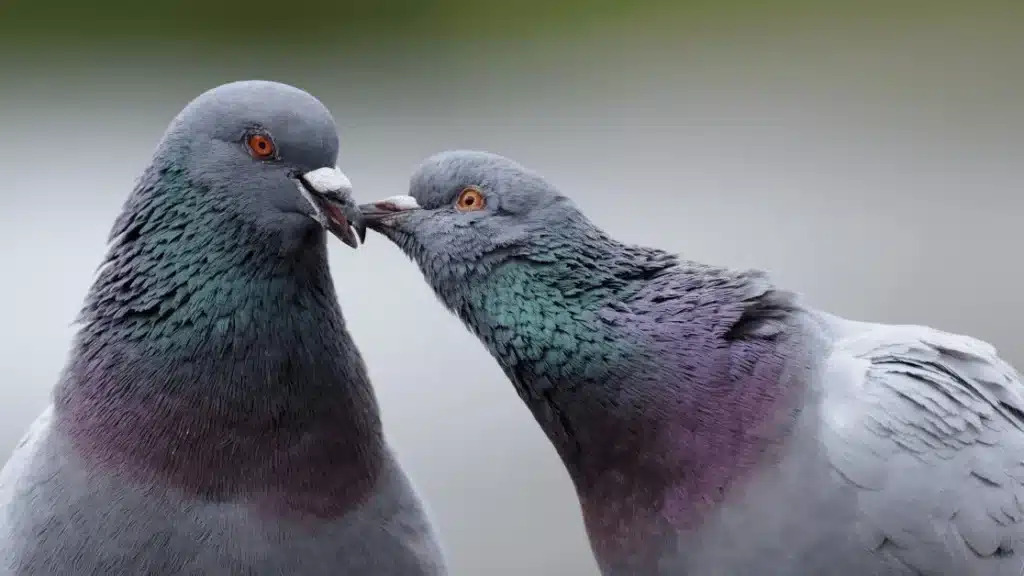
Conclusion
In the intricate and captivating world of pigeon mating is a testament to the wonders of nature’s design. What may appear as simple cooing and posturing to the casual observer reveals itself as a complex dance of courtship and connection when explored more deeply. Pigeons, with their subtle rituals and behaviors, demonstrate the beauty of simplicity in the quest for love and reproduction. Throughout this exploration, we’ve discovered that pigeon mating involves a series of steps, each with its own significance. From the initial attraction between potential mates to the careful selection of a partner, pigeons employ a repertoire of behaviors, including cooing, head bobbing, and puffing up their plumage.
These actions not only serve to impress and woo potential partners but also establish strong bonds that often last a lifetime. Nesting is another crucial phase in the life of pigeon couples. Their cooperation and dedication in constructing a safe and comfortable nest for their pigeon offspring reflect the nurturing aspect of their partnership. Pigeon pairs take turns incubating their eggs and caring for their chicks, showcasing a commendable teamwork that ensures the survival and well-being of their young. The role of hormones, environmental factors, and genetic predispositions in pigeon mating underscores the fascinating interplay between biology and behavior.
These factors contribute to the diverse range of courtship displays and strategies observed in pigeon populations around the world. Pigeon mating, while often occurring in the urban sprawl, reminds us of the intimate connection between humans and nature. These seemingly ordinary birds have shared our urban landscapes for centuries, and their distinctive courtship rituals offer a glimpse into the persistence of natural instincts in the face of urbanization. It is a testament to the enduring power of love and partnership in the animal kingdom, even in the midst of concrete jungles and modern distractions

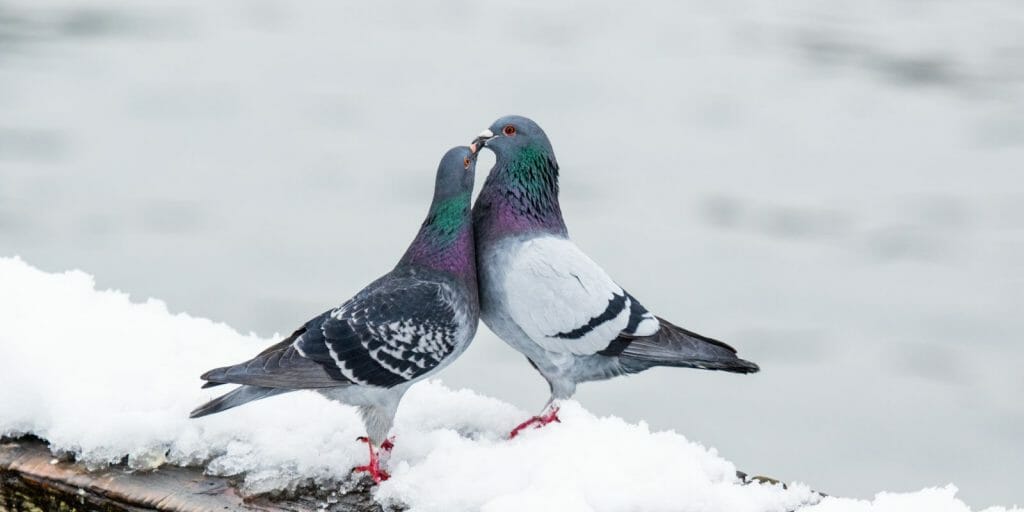
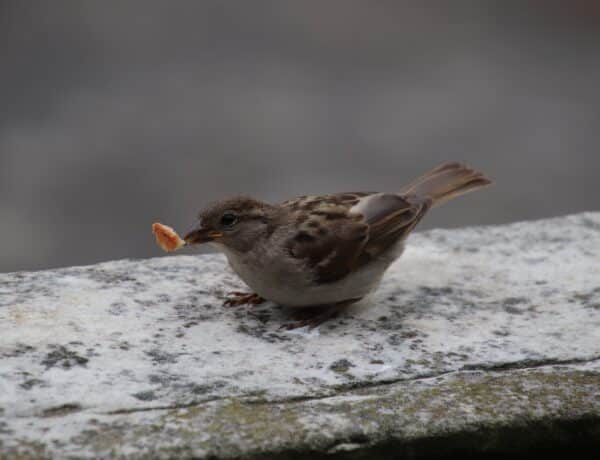
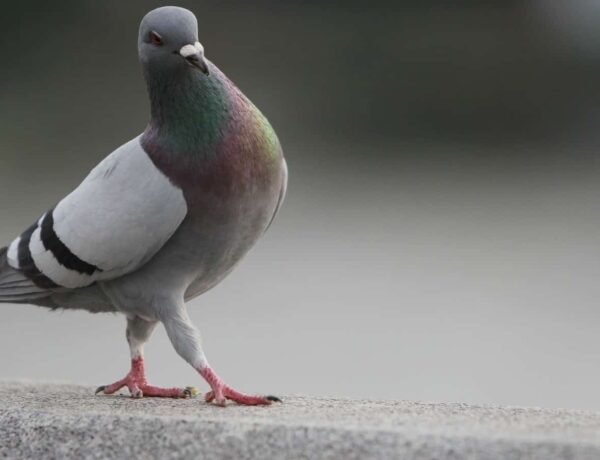
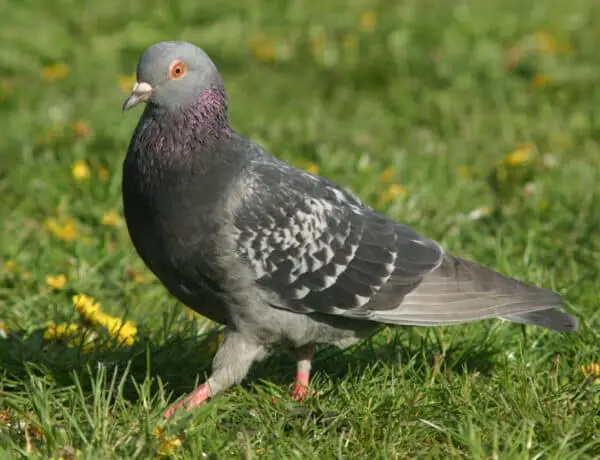
No Comments